Shot placement for big game animals is often a contentious topic among hunters. When you take that discussion and add in variables like range and weapon choice (rifle, bow, crossbow, airgun), you are pouring fuel on a volatile fire.
It is pretty easy to see why the topic is a source of much disagreement. Every shooting scenario includes a huge list of variables.
Once all the variables are identified, the decision comes down to the best judgment of the hunter. As you can imagine, this varies.
There are several places you can shoot a deer that will kill it in a quick and humane fashion. Of course, some of them are evaluated as riskier than others.
Whether shooting a bullet or an arrow, a well-placed shot just behind a deer’s shoulder will do devastating damage to both lungs and the heart. Perfect killshots enter through the ribs and exit the far side. This creates minimal meat damage, considerable blood loss, and an easy-to-see blood trail.
This article will discuss deer kill zones, shot placement, and shot angles for those hunting with either a rifle or a bow.
The intent here is not to render a verdict on the ethics of each shot, but to provide readers with information that they can apply to their own decisions in the field.
Deer Shot Placement and Angles
1. Broadside Presentation: The Ideal Choice for a Humane Kill

As you watch your favorite hunting show on TV, this is the shot they are all waiting to execute as the deer takes those final few steps into the open.
A broadside deer provides a large target with unimpeded access to its vitals and clear references for shot placement.
Whether you are shooting with a rifle or a bow, a shot landed just behind the shoulder, right at or above the point created by the shoulder, will penetrate both lungs and the heart.
The Ideal Shot
In a perfect situation, this shot enters through or between ribs and exits through the ribs on the opposite side. The benefits of this kind of shot are that it minimizes meat damage while at the same time creating a lot of blood loss, which makes for a blood trail that is easy to see and track.
While some shots provide challenges for the arrow because it may encounter bone, an arrow contacting a rib should be no problem, especially if you have done your homework on hunting arrows. The same is true for smaller caliber rifles.
This shot is considered ethical because it also affords the most margin for error. The lungs are a big target, and particularly with a rifle, if you miss forward on the animal you will likely break one or both shoulders.
What if You Miss?
Missing high puts you in an area where you may break the deer’s back, and missing low generally will be a complete miss, or a survivable flesh would.
Missing toward the back of the animal means your shot will hit the deer in the gut, and if you are “lucky,” the liver. Many gut-shot animals are recovered, but it is definitely not an advisable place to hit a deer.
2. Quartering Presentation: Pretty Good Access to the Vital Organs

If the deer is quartering away and you aim slightly farther back than if it were broadside, you should take out the lungs and the heart, and hit the off shoulder.
With most rifles and bows, this will break the off shoulder and most likely take the deer off its feet. Big game animals are tough, and even with a perfect broadside vital shot, they can run quite far.
There are a variety of reasons a person might not want the animal to run off:
1. For example, if it is getting dark or pouring rain, tracking can be difficult. Sometimes in public land hunting, you have to be concerned about your fatally wounded deer running into another hunter that also shoots it.
2. Some hunters just prefer to knock an animal down where it stands so there is no risk of not recovering it.
In any of these situations, the quartering away shot would be effective because it is lethal, but also should immobilize the deer.
Downsides
1. The downside of the quartering away shot is that you will experience some meat loss in the off shoulder.
This could be minimal with an arrow or a small caliber rifle that does not create too much shock or bloodshot but could be up to the whole front quarter with a big bore rifle.
2. The other downside of this shot with a bow is that there is a good chance your arrow will not exit the animal, so you would only have the entry hole creating a blood trail if the animal can move.
While the arrow will probably not shatter the off shoulder like a bullet would, it still should break it or make it difficult for the deer to use that leg.
Quartering away or to you?
If the deer is quartering to you, the shot is a no-go with a bow. The nearside front shoulder will effectively block the vitals, and an arrow cannot be relied upon to cause enough damage to the shoulder to bring it down.
In the quartering away shot, if the arrow breaks the far shoulder it is a bonus to the already fatal damage it has done.
With a rifle, whether the animal is broadside or quartering-to, most deer calibers will easily go through the shoulder and continue on to create sufficient damage to the vitals.
Again, you are looking at meat loss in one or both shoulders, but in all likelihood, an easy to recover animal that you took with a quick and humane kill.
3. Facing Presentation: Tempting, but Tricky

By not passing an arrow or bullet perpendicularly through the side of the chest cavity, you can only hit one lung.
While puncturing a single lung will probably kill the deer eventually, taking out both lungs is important. That is why you are trying to hit the heart on a facing shot.
Again, this shot is going to be more forgiving with a rifle. If you hit high you will likely break its neck or back. If you miss right or left, you will probably damage a lung and break a shoulder.
Because the vitals sit low in the chest cavity, a low hit should still be fatal, unless it just grazes the brisket.
Most bowhunters will tell you their choice is to pass on this shot, although a few are confident in this shot.
The trick is to use a bow that can fire an arrow with adequate kinetic energy to punch through some bone and to be accurate enough to hit a small target.
4. Deer Neck Shot Placement: A Risky Proposition from Any Angle

Where to neck shot a deer comes down to where the spine is. The safest neck shot placement on a deer would be halfway between the top or back of it’s neck and the front or underside of its neck about where the white patch is on a whitetail. A buck in full rut has likely built up muscle mass near the top so aiming too high might only injure the deer. Whereas if you aim too low you may miss the spine and hit the esophagus. On a doe, you may want to aim slightly above the halfway mark.
When done right, the shot destroys a portion of the deer’s spine, rendering it dead in seconds. With a high-powered rifle, this does not always mean you have to hit the deer directly in the vertebrae.
Generally, the impact of the bullet creates enough concussion to do the job if you hit solid muscle within a couple inches of the spine.
If you do not miss entirely, and only catch the windpipe or the edge of the neck, this can turn into an ugly miss. Sometimes, the shot is not fatal, but the deer loses the ability to raise its head.
Because no vitals have been damaged, the deer goes stumbling off with its head stuck hanging low, without any injury that is going to cause death quickly.
This could create a difficult tracking scenario where recovery is anything but guaranteed.
Just like the facing shot, the neck shot is one that divides archers. While some are confident that they can either punch the spine or sever major arteries, others feel the shot is too low percentage to try.
You definitely do not have the advantage of the concussion you get from a high-powered rifle. So you need to be certain you can hit a very small target before attempting this shot.
5. Headshot: Considerable Accuracy Required

In terms of bullets, nothing turns the lights out on a deer faster or more humanely than a round to the head.
The same cannot be said for a bear whose skull is much thicker and may result in a non-lethal shot. There are better shot placements for black bear.
However, if you miss by just a little, you risk hitting it in the jaw. This will lead to almost certain, agonizing death days or weeks later.
Obviously, if you execute a headshot effectively there is no meat loss and no tracking to be done.
Many people make it out to be an “all or nothing” shot. You are either going to kill it immediately or miss, but that is not the case. As far as target size, a non-lethal hit to the jaw or nose is at least as big as the brain area.
While some deer have certainly died via arrow to the head, it is again not recommended by most archery hunters.
The round nature of the skull creates the potential for a deflection if the arrow point and blades do not contact the bone at a perpendicular angle.
6. The Base of the Skull: Best For Killshot
This shot could be in the headshot category or the neck shot category because it is located right where the two meet. Again, it has a very low margin for error.
This shot is called out here because while it is not a great initial shot, it is a good kill shot.
From either point-blank range or a range from which you are confident finishing off a wounded animal, this shot will kill it immediately with minimal additional meat loss, but also will not damage the skull or antlers if that is a concern for you.
Deer Kill Zones
Most hunters and wildlife officials agree that there are really only two sure kill zones on a deer:
- Chest: The main and largest vital organs are found here offering the greatest likelihood for a quick and humane kill.
- Head: When the brain is shot, consciousness is lost almost immediately and death will quickly follow.
A chest shot is widely considered to be the most effective kill zone on a deer as it passes through the vital organs, particularly the heart and lungs.
While a perfectly placed head shot on a deer is likely to provide the quickest and most humane kill, the target is much smaller than the vital organ zone in the chest. This makes a slightly misplaced head shot risky in the sense that you could sadly injure the animal without putting it down. And a head injury could lead to extreme suffering of the deer if it is not fatal.
Additionally, the head is the most likely part of a deer to move when you are lining up your shot. Deer will move their heads from side to side or up and down while browsing. They may quickly jolt their head upwards if they sense danger. Their chest, however, remains relatively stable even when going about their regular business.
Poor timing could lead to a botched head shot due to the deer moving ever so slightly. That risk is much lower with a chest shot.
Head shots may also put at risk the antlers, or trophy, on a big buck. After all, the brain sits just under the antlers on a deer. If you want to do a euro mount or take your deer to a taxidermist, a head shot is probably a bad idea.
For meat hunters on the other hand, a successful head shot will preserve the most meat possible on a deer compared to a chest shot which always results in some loss of meat.
Rifle Caliber Considerations
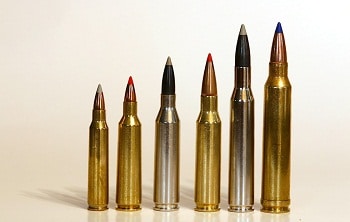
Others prefer smaller caliber rifles because reduced recoil lends itself to better accuracy. Still, others are open to both extremes and anything in between, preaching shot placement as the most important factor.
The people that side with shot placement contend that a well-placed shot with a small caliber rifle is better than an ill-placed shot with a big bore rifle.
There is quite a bit of validity to this argument, but using a big-bore rifle definitely opens the door to some additional shot placement possibilities.
On one extreme end of the conversation- consider trying to take a deer down with a rimfire cartridge like a .22. In all likelihood, you would be forced to try to do it with a headshot as your first choice.
As discussed above, this is a small target with a gruesome downside.
With a smaller centerfire round like a .223, you could effectively perform the broadside vital shot, but would probably not break both shoulders if that is what you tried to do.
With big magnum calibers like the 7mm Remington Magnum, .300 Winchester Magnum or .300 Remington Ultra Magnum, smashing through shoulders is no problem.
Even other mid-sized rounds like the .270, 30.06 or .308 should have no problem breaking through bone on their way to the vitals of a deer.
Regardless of where you are aiming, high-powered rifles will give you a little more margin for error because they create concussion and shock to areas outside of their bullet path.
Range
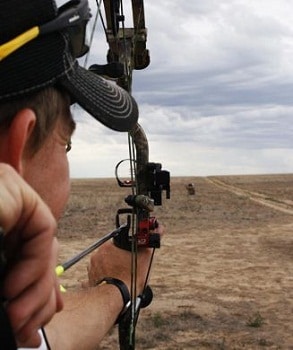
Shooting skills are a huge factor, especially if the shot were to be taken in a vacuum. Outside of perfect conditions, skills are still a factor, but so are other elements like wind.
The longer the shot attempt, the more these factors come into play.
You must also consider that bullet and arrow flight take more time as you get farther away from the animal. The animal moving while your projectile is on the way is a very real possibility.
It is common for deer to “jump the string,” or flinch when they hear the sound of the arrow being released. Depending on whether they duck or jump, this can cause a high or low miss.
Because long-range bullets travel at supersonic speeds, deer do not have a chance to react to a shot until after the bullet gets there.
However, when you start talking about shots outside of a few hundred yards, it is reasonable that an animal could change position from normal movements by the time the bullet gets there.
All of these variables increase exponentially with range. You should narrow down your shot selection as the range increases.
Wrap Up
Over the course of this article, you may feel as though it was funneling you towards taking broadside shots at the shoulders and vitals.
There are other shots that are effective for some hunters with certain weapons and skill-sets. But there is a reason why a huge percentage of animals are harvested every year with broadside shots. It is a high-percentage shot that is both effective and humane.
Make sure that you evaluate each shot scenario based on your competency and the important variables discussed in this article.
It is always a good reminder that you cannot take a bullet back once you have fired it. And for all the joy a good hit brings you, a bad hit can bring you at least that many sick feelings. Choose your shot wisely!
Next, it’s time to field dress your deer and transport it home.
Related: How Long After Shooting a Deer Do You Have to Gut It?

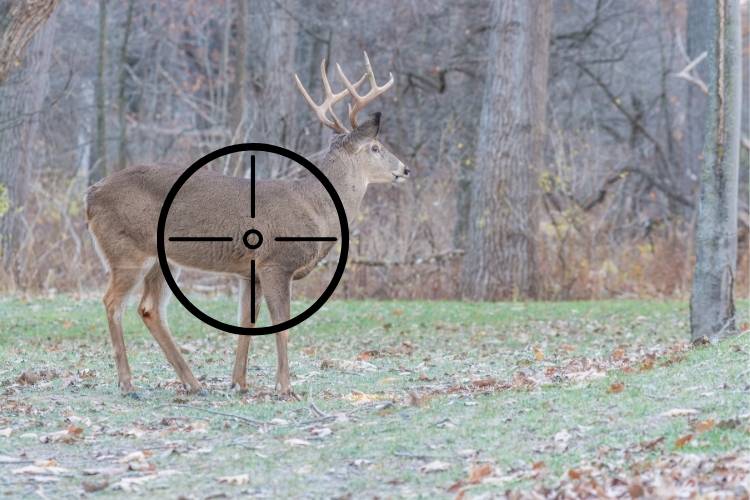

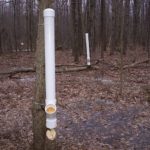

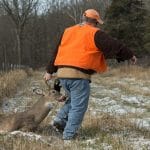
Comments are closed.